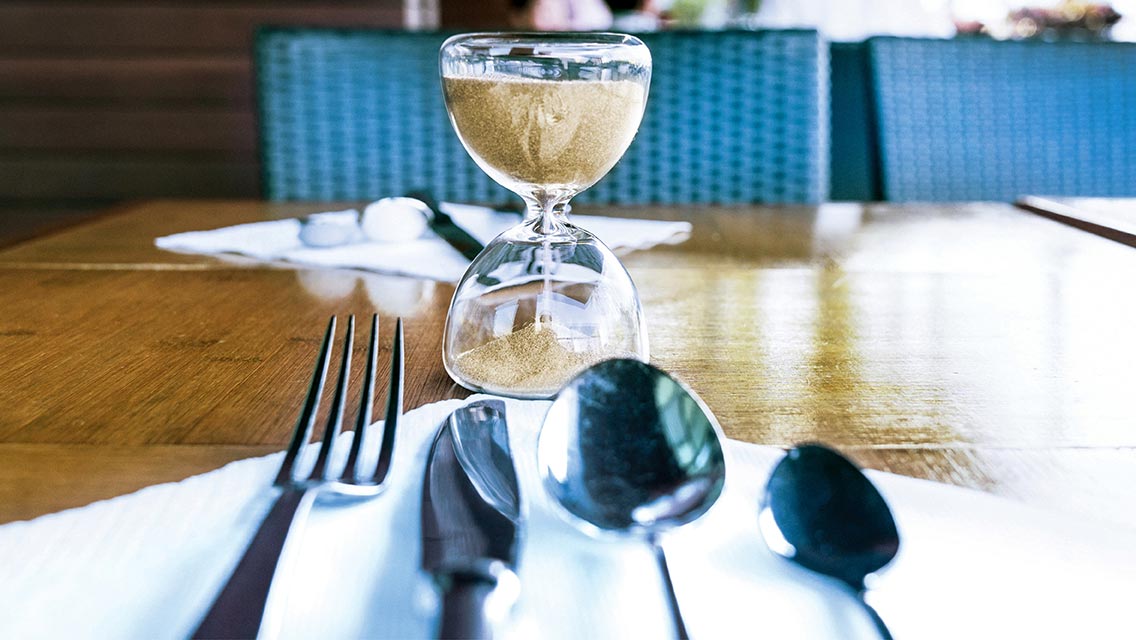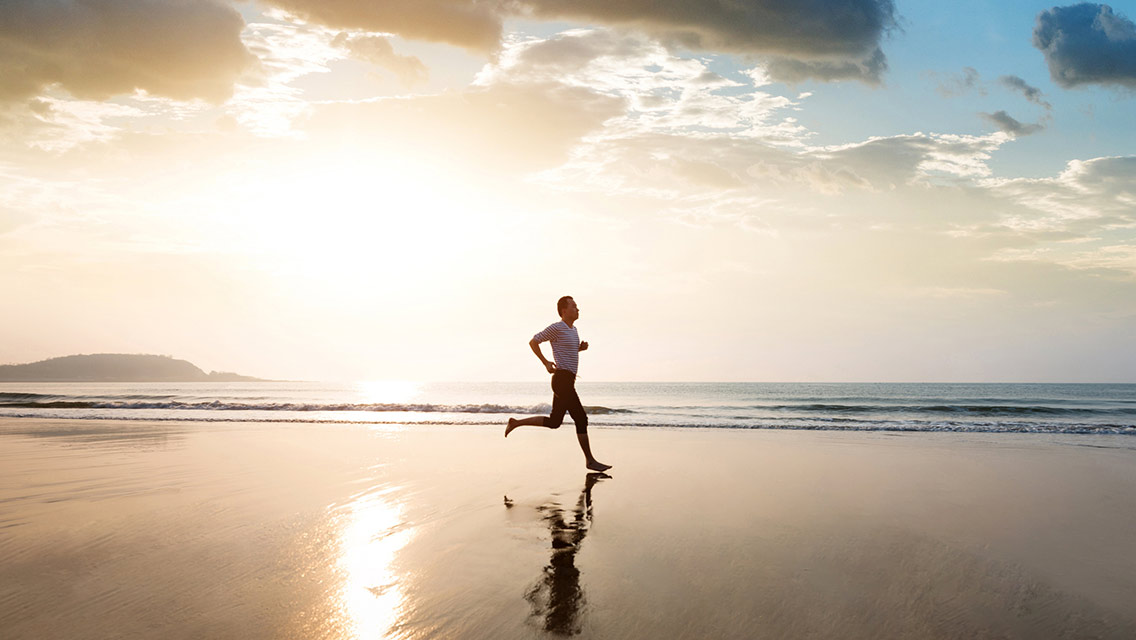Throughout Ramadan, Ayesha Akhtar wakes up before sunrise and starts her day with the early morning breakfast called suhur. She goes about her daily routine without any food or drink because Muslims are required to abstain from both (as well as from smoking) from dawn to dusk. Then, just before breaking her fast, Akhtar might head out for a run at a casual pace or do a light strength workout. As the sun sets, she rehydrates and replenishes by eating a hearty meal known as iftar.
Ramadan calls for a scaled-back version of daily life to allow more time to focus on spirituality. And for Akhtar, 48, a personal trainer, distance runner, and CrossFit enthusiast in Oak Park, Ill., that includes a pared-down fitness routine. In fact, for many years, Akhtar didn’t exercise at all during the monthlong fast.
“For me, it’s been a personal progression to get to where I am right now. I didn’t used to work out during Ramadan, and I’d come out of it feeling sluggish and not great,” she says. “Then I started to incorporate exercise slowly, to the point where now I’m able to run during my fast and not feel thirsty.”
When Akhtar began to safely integrate fitness while fasting, she felt the effects beyond her physical experience. “I think people should realize [that] if they are doing some sort of exercise at all, that is an amazing accomplishment in itself and another layer of your spiritual practice,” she says.
There are many reasons for fasting, in addition to observing Ramadan. Other religions, including Christianity, Judaism, and Buddhism, incorporate routine fasts as a spiritual practice. And many health enthusiasts have adopted intermittent fasting (IF) due to the mounting research that suggests it can boost digestion, assist with weight loss, support cognition, improve heart health, enhance sleep quality, and potentially even help with cancer prevention. (Learn more about intermittent fasting at “Everything You Need to Know About Intermittent Fasting.”)
Fitness and fasting may seem to be at odds with one another: We know food is energy and our bodies need energy to perform at our best. But we can still safely exercise while adhering to a fasting protocol. Like Akhtar, many people who fast — for whatever reason — feel better when exercise is a part of their life. “I cannot imagine a life without daily exercise, nor do I feel good when I miss days in a row,” she says.
Experts share these six tips for enjoying the mutual benefits of fasting and fitness.
1) Consider the timing of your workouts.
There are many ways to schedule specific types of strength or cardio workouts while practicing intermittent fasting. “If you’re doing low- to moderate-intensity workouts, most people can safely go into their exercise session in a fasting window, depending on their own unique tolerance,” says Samantha McKinney, RD, CPT, Life Time’s national program manager for nutrition and metabolism. “It might be hard for people to concurrently try to adjust their exercise timing while beginning a new fasting regimen. So, it really is about doing what works for you to stay consistent with exercising along with your other healthy lifestyle habits.”
The timing of the fasting window for Ramadan can pose an additional challenge. Waking up before dawn to fit in a workout and suhur might seem like a good plan, but it’s important to make sure you’re getting adequate sleep. Exercising after iftar might feel like a way to avoid exercising on an empty stomach, but not everyone’s gut can tolerate that timing.
“I have friends who will break their fast at the end of the day and then go work out, but that order of operations was tough on my digestion,” says Akhtar, who prefers to exercise just before sundown and then eat a big dinner afterward. “I’d encourage people to find a rhythm that works for them.”
2) Use caution when it comes to high-intensity exercise.
Intermittent fasting typically involves periodic, intentional fasts lasting longer than 12 hours. Some people practicing IF can safely continue to train at a high intensity, but McKinney cautions against doing this type of workout following a long period of fasting — say, 24 to 48 hours.
“One thing to keep in mind is that when you’re doing high-intensity exercise, your body relies on carbohydrates, [which are broken down into] glycogen [and] stored in your liver and muscles. When your glycogen stores are lower from fasting, you’re not going to perform as well during your workout,” she explains.
Akhtar recommends sticking to low or moderate intensity for both cardio and strength workouts while fasting for Ramadan, “because there is not a lot of time in the eating window to rebuild muscle fibers.” She often takes the month off from CrossFit and creates her own “maintenance” strength workouts.
“Because I work out in the mornings, it is hard for me to do that level of physical exertion without being able to drink water or recover with a protein shake — nor do I want to,” she says. Rather than working on big lifts, Akhtar takes the time to focus on areas that she normally doesn’t prioritize, such as accessory work and core exercises.
(Not sure what to do? Try this “Easy Dumbbell Strength” workout.)
3) Make the most of mealtimes.
What you eat affects your energy throughout the day, so it’s important to look to foods that are nutrient-dense and high in fiber and protein to sustain you throughout your fasting window.
During Ramadan, take advantage of both opportunities to eat — and prioritize protein and hydration to optimize what is lost from not consuming food and water during the day, says Anika Christ, RD, PT, Life Time’s senior director of nutrition and a detox coach.
“Some people aren’t super hungry first thing in the morning, so in that case I recommend a good quality protein shake. Most people can stomach a beverage even if they can’t stomach food,” she says. And “if possible, try to consume your evening meal a couple hours before bed to help avoid any sleep disruptions that could happen from your body trying to digest food.”
4) Hydrate with electrolytes when possible.
For those practicing IF, McKinney recommends drinking water with electrolytes throughout the day and especially during workouts.
If you’re fasting for Ramadan, when both food and drink are restricted, she advises using nonfasting windows to increase your water and electrolyte intake. “Adding an electrolyte mix to water can often help you get rehydrated faster than water alone, especially when going long periods without consuming liquids,” she says.
5) Listen to your body.
“If you’re getting dizzy or lightheaded, stop your activity and at least reduce the intensity of your workout based on how your body responds,” McKinney advises. “But also make sure you check off other important boxes: Did you sleep enough? Did you eat enough protein? Are you hydrated with adequate water and electrolytes headed into your workout? And then finally, when it comes to restricting your eating window and coupling that with exercise, did you approach it gradually to ensure you’re being mindful of what works best for you?”
McKinney suggests ramping up the duration and intensity of your workouts slowly after adopting a fasting protocol. Start with gentle and low-intensity exercise — activities like yoga, walking, and resistance training with light weights or bands are some good options — as your body adjusts to the short eating window.
In addition to how you’re feeling during exercise, pay attention to how you feel afterward. “Let’s say you did a workout toward the end of the day and then you broke your fast, but you’re still tired and not recovering. That’s a sign you might have gone too hard,” says Akhtar.
6) Reframe your mind.
If you’re new to fasting, be patient. “Depending on where you are coming from with your current eating habits, you’ll want to be patient with your body’s response to hunger, energy, etc.,” says Christ. “Some people have to work their way up to a certain window of fast because their body doesn’t tolerate it well at first, and [they] might experience some common symptoms like headache, low energy, or fatigue.”
She adds that “some people use fasting as a long-term tool: It’s all about how you adapt to it over time. That first workout, you might think, I’m starving! because you’re so used to fueling up beforehand. But then over time, your blood-sugar management gets better, or you find that you’re sleeping better.”
Ramadan is not a time to challenge yourself, says Akhtar. “I think a lot of people have a defeatist attitude about exercising during Ramadan, thinking, This scaling back is going to set me back,” she says. “But really, it’s a nice, forced break to get to try different things. Embrace that time of Ramadan and enjoy the break that comes with it.”





This Post Has 0 Comments